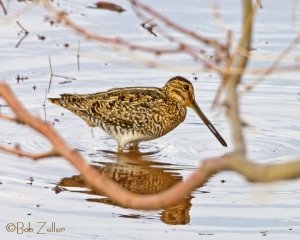About two and a half years ago, Feb. 7, 2008, to be exact, Ann and I, decided to make a trip down to Llano, Texas, a distance of 130 miles. A pair of nesting Bald Eagles have been going there annually, for the past six or seven years, always using the same nest. We had been there a few months previously, when they had arrived to start re-building the nest. During that time, we had watched them haul up branches, sometimes the size of 2x4s.
This time we were interested in seeing the young eaglets. We got glimpses, but they were pretty tiny, and mostly hidden from view. To see the eagles, a person has to watch from the side of Highway 71, about 7 miles from Llano. For best viewing use binoculars or long lenses. Because of the large amounts of people that flock to see the eagles, the highway department has cleared a spot off the road to allow for parking, so is not to impede traffic.
As usual, there were 3 or 4 other photographers there, each with a long lens set-up because the nest is about 200 yards from the highway, high in a tree. Some were using Nikons, but I didn’t hold that against them. 🙂 Seriously, we were all friends and enjoyed swapping tales and talking photography. For best lighting it is best to get there early in the morning. Also, to get the better spot to set up a camera. It can get a bit crowded.
It was pretty cold and nippy that morning, so it wasn’t long before Ann opted to sit in the car and read a book. I was thankful that I had dressed for the coolness. At least, the sun was bright and shining.
As we watched, one of the adults was going and bringing food for the young ones. We watched him/her bring up a whole leg of a deer, a large duck or goose, and a large fish of some kind. Those kids were going to be well fed.
I got many images, of course, but none that really showed much of the eaglets. As I said, they usually were hidden by one or both of the adults, and also because of the depth of the nest. By the way, those eagles nests, or aeries, are huge. This one probably measured 8 feet across. I have chosen this image to show you. First the original, to show you how far away it was. Remember I was using the equivelent of a 700mm telephoto lens. The second photo is of course, my cropped and edited version.

Bald Eagle from 200 yards thru 700mm lens

Bald Eagle - cropped close-up
- Canon EOS 40D
- Canon 500mm IS lens with 1.4 tele-converter – tripod mounted
- 1/1600 sec. @ f7.1
- ISO 400
- Lens focal distance 700mm
- Metering – pattern
- Aperture priority
- Bogen-Manfrotto tripod
- Wimberley II gimbal head
Click in either image to enlarge.









































